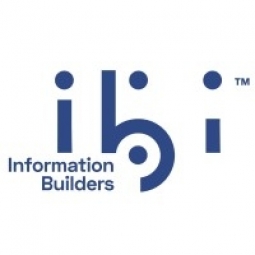公司规模
Large Corporate
地区
- America
国家
- United States
产品
- iWay Software
- WebFOCUS
- Professional Services
技术栈
- IBM midrange systems
- Microsoft SQL Server
- Oracle
实施规模
- Enterprise-wide Deployment
影响指标
- Productivity Improvements
- Cost Savings
技术
- 应用基础设施与中间件 - API 集成与管理
适用行业
- 零售
适用功能
- 销售与市场营销
- 商业运营
用例
- 供应链可见性(SCV)
- 库存管理
服务
- 系统集成
- 软件设计与工程服务
关于客户
Winston Brands, Inc. is a fast-growing direct-to-consumer multi-channel merchandising firm, offering a wide array of products through its popular catalog. Headquartered in a suburb of Chicago, IL and founded in 1997, Winston Brands differentiates itself in the highly competitive mail-order market through its ability to offer unique and appealing merchandise at exceptional value. The company’s brands include Collections Etc., which ranks in the top 100 catalogs on Multichannel Merchant’s list. For the past decade, Winston Brands has been on a course of accelerated growth.
挑战
Winston Brands, a fast-growing direct-to-consumer multi-channel merchandising firm, was facing challenges in integrating a wide array of systems, both internal and external, to support the increasing number of transactions resulting from the company's continued growth. The company's technology solutions struggled to keep pace with such rapid expansion, and they were replaced with several new, more robust information systems. However, connecting those systems, many of which were deployed simultaneously, proved to be a challenge. The organization evaluated all the other primary integration vendors on the market, including, TIBCO, and IBM.
解决方案
After evaluating several integration vendors, Winston Brands chose iWay Software integration solutions from Information Builders, for their ability to seamlessly access IBM midrange systems. Winston Brands also saw Information Builders as a company that would serve not only as a vendor, but also as a strategic business partner. With the assistance of Information Builders’ Professional Services department, Winston Brands created its first interface between its order management system by CommercialWare Inc. and its warehouse management system from Manhattan Associates, both of which run on IBM iSeries midrange servers running i5/OS. The expertise of the Professional Services team, combined with iWay’s pre-packaged integration components, eliminated the need to write custom code, helping Winston Brands to complete the project in just three months.
运营影响
数量效益

Case Study missing?
Start adding your own!
Register with your work email and create a new case study profile for your business.
相关案例.

Case Study
Improving Production Line Efficiency with Ethernet Micro RTU Controller
Moxa was asked to provide a connectivity solution for one of the world's leading cosmetics companies. This multinational corporation, with retail presence in 130 countries, 23 global braches, and over 66,000 employees, sought to improve the efficiency of their production process by migrating from manual monitoring to an automatic productivity monitoring system. The production line was being monitored by ABB Real-TPI, a factory information system that offers data collection and analysis to improve plant efficiency. Due to software limitations, the customer needed an OPC server and a corresponding I/O solution to collect data from additional sensor devices for the Real-TPI system. The goal is to enable the factory information system to more thoroughly collect data from every corner of the production line. This will improve its ability to measure Overall Equipment Effectiveness (OEE) and translate into increased production efficiencies. System Requirements • Instant status updates while still consuming minimal bandwidth to relieve strain on limited factory networks • Interoperable with ABB Real-TPI • Small form factor appropriate for deployment where space is scarce • Remote software management and configuration to simplify operations

Case Study
Digital Retail Security Solutions
Sennco wanted to help its retail customers increase sales and profits by developing an innovative alarm system as opposed to conventional connected alarms that are permanently tethered to display products. These traditional security systems were cumbersome and intrusive to the customer shopping experience. Additionally, they provided no useful data or analytics.

Case Study
How Sirqul’s IoT Platform is Crafting Carrefour’s New In-Store Experiences
Carrefour Taiwan’s goal is to be completely digital by end of 2018. Out-dated manual methods for analysis and assumptions limited Carrefour’s ability to change the customer experience and were void of real-time decision-making capabilities. Rather than relying solely on sales data, assumptions, and disparate systems, Carrefour Taiwan’s CEO led an initiative to find a connected IoT solution that could give the team the ability to make real-time changes and more informed decisions. Prior to implementing, Carrefour struggled to address their conversion rates and did not have the proper insights into the customer decision-making process nor how to make an immediate impact without losing customer confidence.

Case Study
Ensures Cold Milk in Your Supermarket
As of 2014, AK-Centralen has over 1,500 Danish supermarkets equipped, and utilizes 16 operators, and is open 24 hours a day, 365 days a year. AK-Centralen needed the ability to monitor the cooling alarms from around the country, 24 hours a day, 365 days a year. Each and every time the door to a milk cooler or a freezer does not close properly, an alarm goes off on a computer screen in a control building in southwestern Odense. This type of alarm will go off approximately 140,000 times per year, equating to roughly 400 alarms in a 24-hour period. Should an alarm go off, then there is only a limited amount of time to act before dairy products or frozen pizza must be disposed of, and this type of waste can quickly start to cost a supermarket a great deal of money.

Case Study
Supermarket Energy Savings
The client had previously deployed a one-meter-per-store monitoring program. Given the manner in which energy consumption changes with external temperature, hour of the day, day of week and month of year, a single meter solution lacked the ability to detect the difference between a true problem and a changing store environment. Most importantly, a single meter solution could never identify root cause of energy consumption changes. This approach never reduced the number of truck-rolls or man-hours required to find and resolve issues.








